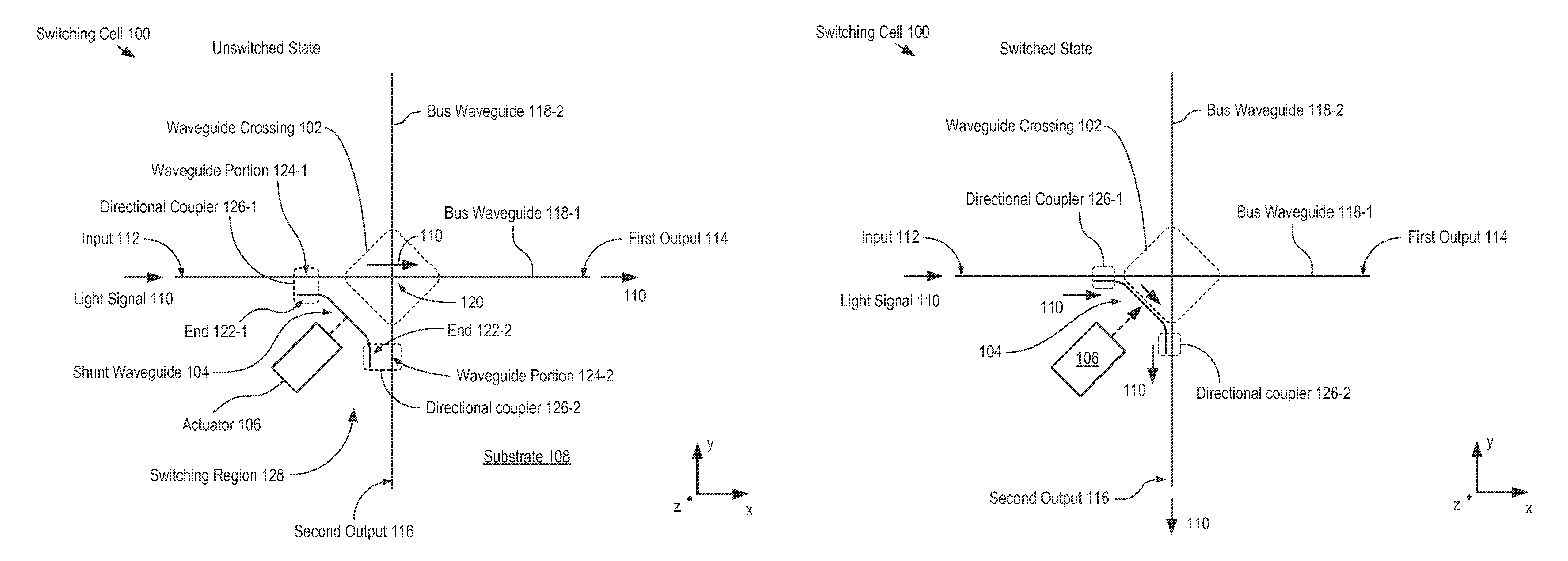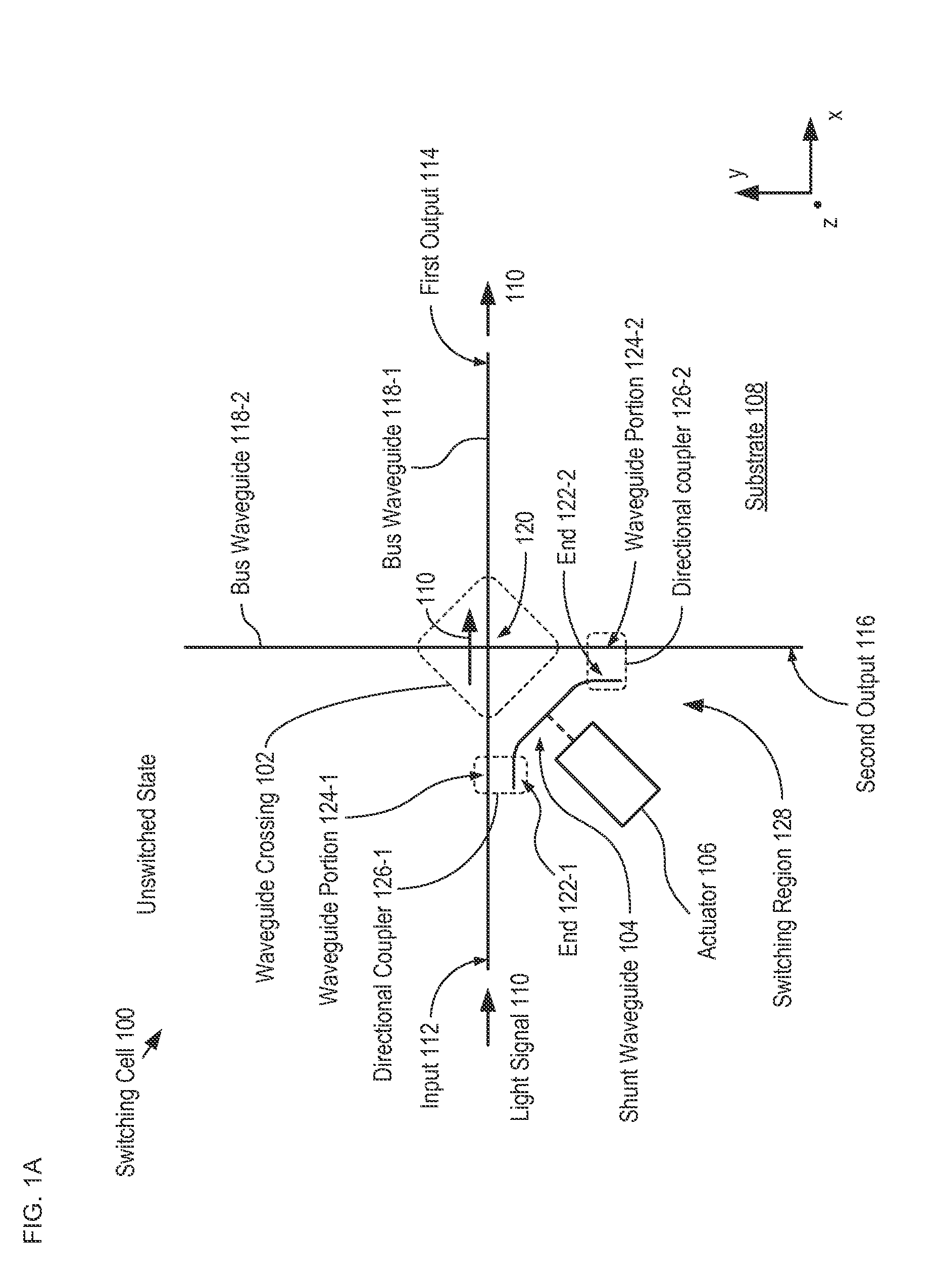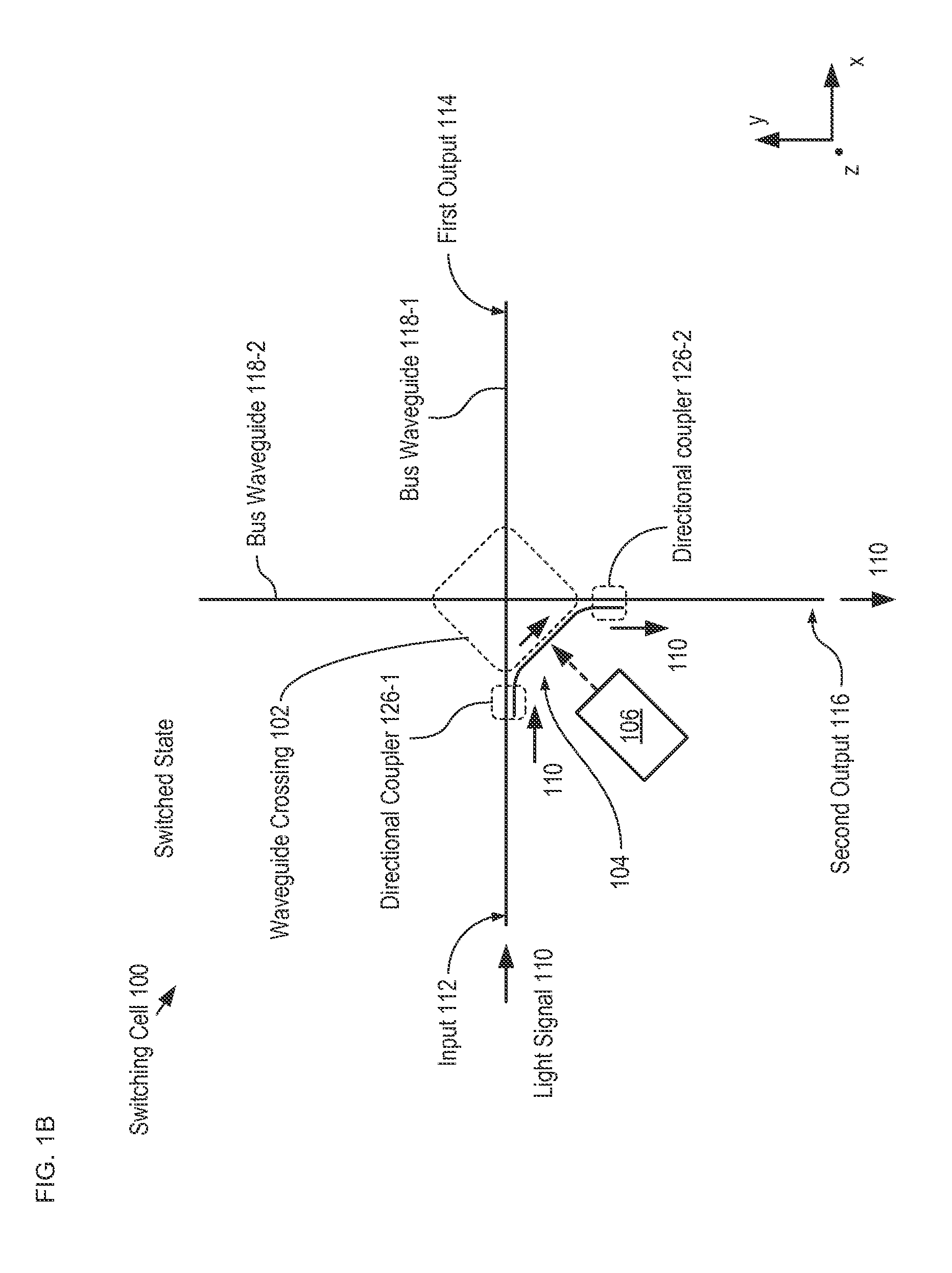Silicon-photonics-based optical switch
a technology of optical switches and silicon photonics, applied in the field of optical switching, can solve the problems of increasing the difficulty of increasing the network bandwidth in this manner, the response time of such switches is limited to about 10 milliseconds, and the development of practical systems suitable for widespread deployment in such applications, etc., to achieve the effect of rapid and low-loss optical switching
- Summary
- Abstract
- Description
- Claims
- Application Information
AI Technical Summary
Benefits of technology
Problems solved by technology
Method used
Image
Examples
Embodiment Construction
[0047]The most basic embodiment of the present invention is an optical switch comprising a 1×2 switching cell. By combining multiple switching cells in a monolithic planar lightwave circuit, more complex network element embodiments, such as M×N cross-connects, data network cross-point switches, wavelength add-drop multiplexers, and the like, can be developed and such embodiments are within the scope of the present invention. In order to readily afford an understanding of many of its fundamental principles, however, the description of the present invention begins with a simple 1×2 switching cell embodiment.
1×2 Switching Cell
[0048]FIGS. 1A and 1B depict schematic drawings of a 1×2 optical switching cell, in its unswitched and switched states, respectively, in accordance with an illustrative embodiment of the present invention. FIGS. 1A and 1B are simplified to facilitate demonstration of the operation of the switching cell. Switching cell 100 is a 1×2 optical circuit switch that inclu...
PUM
 Login to View More
Login to View More Abstract
Description
Claims
Application Information
 Login to View More
Login to View More - R&D
- Intellectual Property
- Life Sciences
- Materials
- Tech Scout
- Unparalleled Data Quality
- Higher Quality Content
- 60% Fewer Hallucinations
Browse by: Latest US Patents, China's latest patents, Technical Efficacy Thesaurus, Application Domain, Technology Topic, Popular Technical Reports.
© 2025 PatSnap. All rights reserved.Legal|Privacy policy|Modern Slavery Act Transparency Statement|Sitemap|About US| Contact US: help@patsnap.com



